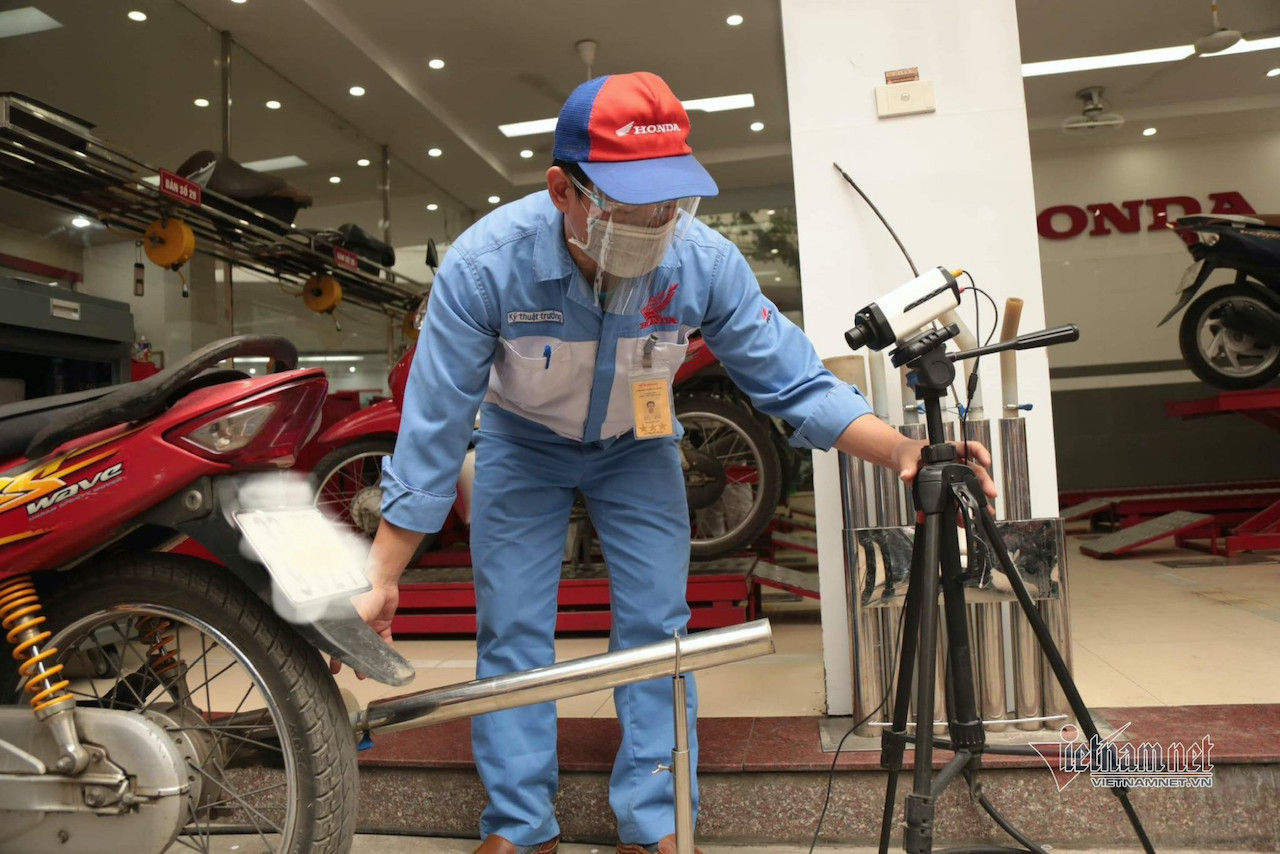
The Ministry of Agriculture and Environment (MAE) has proposed a draft roadmap for applying national technical emission standards for motorcycles. The draft outlines phased implementation of emission testing.
From January 1, 2027, motorcycles in Hanoi and HCM City will undergo periodic emission checks. This will expand to other centrally governed cities – Hai Phong, Da Nang, Can Tho, and Hue - from January 1, 2028, and nationwide by 2030.
MAE has proposed classifying emission standards based on production years. Level 1, or the lowest one, will be applied to the motorcycles made prior to 2008, while newer models must meet higher standards (Levels 2, 3, and 4).
Thus, by January 1, 2027, Hanoi and HCM City, must implement motorbike emission examinations. These two localities have recorded the highest proportion of emissions from motorbikes among urban air pollution sources.
Concerns center on the feasibility of testing millions of old motorcycles and the fate of those over 10 years old failing emission standards.
A representative from the Vietnam Association of Motorcycle Manufacturers (VAMM) confirmed that emission testing is mandated by law and will proceed. However, challenges remain.
“The difficult thing is how to implement the roadmap appropriately. With the time frame from January 1, 2027, the regulation will be implemented in the two major cities of Hanoi and HCM City, I think there are many issues that need attention,” he said.
It is also necessary to build motorbike emission testing stations, but regulations and standards on stations have not been issued. With a large number of motorbikes to be tested, many testing stations will be needed, requiring many personnel.
Meanwhile, for the testing stations to be qualified to operate, inspectors must have a third-class inspection certificate. This requires the inspector to have enough time to complete training courses.
In addition, testing stations need business licenses, measurement permits from provincial authorities, and significant equipment investment.
The VAMM representative emphasized that these requirements are difficult to be met in a short time, urging authorities to issue guidance promptly to facilitate implementation.
Will substandard motorcycles be scrapped?
Experts estimate that once the regulation on mandatory emission checks is applied, around 50 million motorcycles nationwide will require periodic emission testing. Of these, millions of older vehicles are believed to fail to meet standards. For low-income owners, repairing, upgrading, or replacing motorcycles to comply with the new regulation could be burdensome.
Meanwhile, VAMM disagreed with the view. He said under the draft, emission standards are classified based on manufacturing years and this minimizes the number of vehicles not meeting standards and to be scrapped.
Scrapping is not necessarily required even for old motorbikes which fail to meet emission standards, because they can be upgraded to meet standards.
Owners can opt for maintenance or repairs to meet standards before considering part replacements. Manufacturers are ready to supply spare parts and maintenance services, with most guaranteeing parts availability for 10-15 years after a model’s production ends.
Furthermore, the sequential implementation roadmap starts from the two major cities of Hanoi and HCM City, then to the provinces, other centrally-run cities, and then to other localities. Vehicles that have been maintained and repaired, even if they do not meet the standards, will continue to be circulated in provinces that have not yet implemented emission standards.
“I think that such an implementation roadmap will minimize the damage to the people. As for spare parts, currently all companies are committed to providing spare parts for 10 - 15 years after the vehicle model stops production. Thus, vehicle owners do not need to worry too much about not having spare parts if the vehicle has a lifespan of 10 - 15 years," he said.
Vietnam currently has about 77 million motorcycles, with a significant portion being old vehicles using outdated internal combustion engine technology that no longer meets emission standards. However, there is no mandatory national technical regulation for emissions from in-use motorcycles.
The current standard, TCVN 6438:2018, is voluntary. The lack of a mandatory regulation hinders authorities’ efforts to phase out old motorcycles and reduce emissions from transportation, a major source of air pollution in cities like Hanoi and HCM City. In these urban areas, each household typically owns one to two motorcycles.
M. Huyen